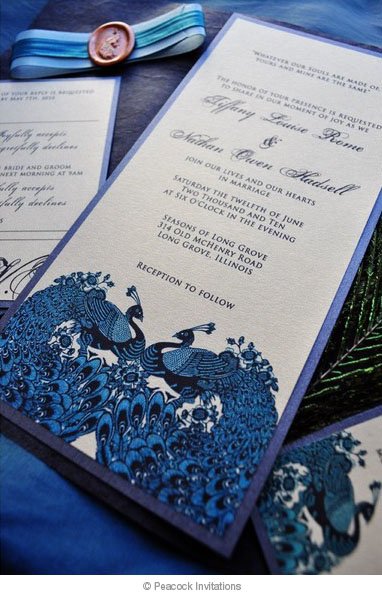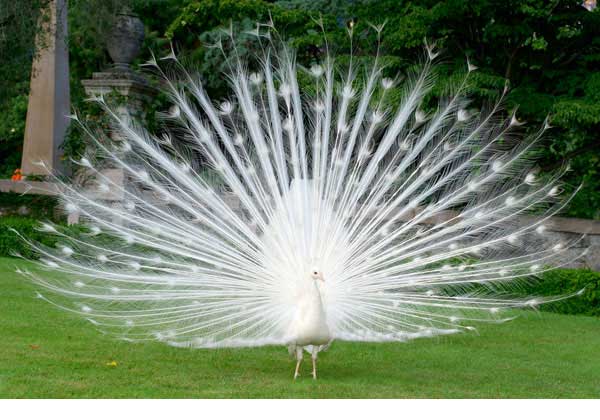Imagine a nervous gentleman. He is shyly, cautiously approaching a woman whom he has been admiring for awhile. He knows she has other admirable suitors from which to choose. He finally gets her attention and presents a dazzling display of iridescence and beauty. Will she take him to be hers?

No, this is not the tale of a groom presenting the love of his life with a sparkling diamond – it’s the courting ritual of the peafowl, the male member of which is known familiarly as a peacock. Native to India and Burma, these exotic, land-based birds are known and revered for their luminous feathers of almost unimaginable shades of cobalt blue, green, chartreuse, purple, and black. Because of their distinct “foreignness” and their incredible aesthetic attributes, peacocks and peacock feathers have long been a popular motif in classic sculpture, design, and textiles. Equally ostentatious and elegant, the exotic image of the peacock lends itself well to romantic interiors, and denotes a sense of wealth and refinement unmatched by other species, save, perhaps, the tiger.
Beyond their beauty, of course, the pure magic of the peafowl wooing ritual is undeniably romantic – whether or not the birds realize it. It stands to reason that brides and grooms can see a little of themselves in the affair. Like swans, peacocks are believed to be monogamous in the wild, adding to their appeal as a nuptial symbol.


Beautiful and symbolic, peafowl and peacock feathers have entered into the wedding mainstream, and can be found on everything from custom invitations to accessories to the floral centerpieces. Brides love the rich color palette and the delicate, wispy strands of the feathers.


For attire, peacock feathers are popular in hair pieces and barrettes for the bride, and as boutonnieres for the men. Peacock feathers have also found their way onto textiles such as ties, bags, and shoes.


Peacock feathers are also popular as part of a floral arrangement or bouquet. The vibrant feathers add a punch of color and a gem-like sparkle to an otherwise demure arrangement, or add a single spectrum piece to an arrangement of matching solid color blooms.
Like many animals, of course, peacocks have genetic variations. One example is the white peacock. While the feathers of a white peacock lack the rich depth of color of standard feathers, the wispy texture is the same and looks positively diaphanous – and romantic – in a pure, monochromatic white. What could be more perfect for a bride?


Couples can also take a clue from the traditional peacock design motifs mentioned above. Artists have interpreted the elegant shape of the bird while leaving behind the color story in marvelous ways. A bride and groom who love the image of the peacock but do not favor the bright colors can be inspired by muted peacock imagery such as this champagne, gold, and white vintage wallpaper. Both the color story and swirling image would be beautiful incorporated on printed items such as invitations and thank you cards, or even the cake.


Some people believe that peacock feathers are symbols of bad luck because of the eye-shaped image in each feather, which is considered to be an “evil eye.” A more popular story, however, is the Greek myth of Argus. In that story, Argus is a multi-eyed monster employed by the goddess Hera to guard Io, an object of her husband’s affection. Argus was tricked and failed, but as an homage to him, Hera took his many eyes and used them to adorn the feathers of the peacock.
Brides and grooms would do well to favor the story of Argus over that of the evil eye – peacock feathers add an elegant, romantic touch to any wedding.
Resources
- Nyjole J Walters Jewelry on Etsy
- Peacock Invitations on Etsy
- Parisxox on Etsy
- Cyberoptix Tie Lab on Etsy
Sign up for a wedding planning course from NYIAD today!







